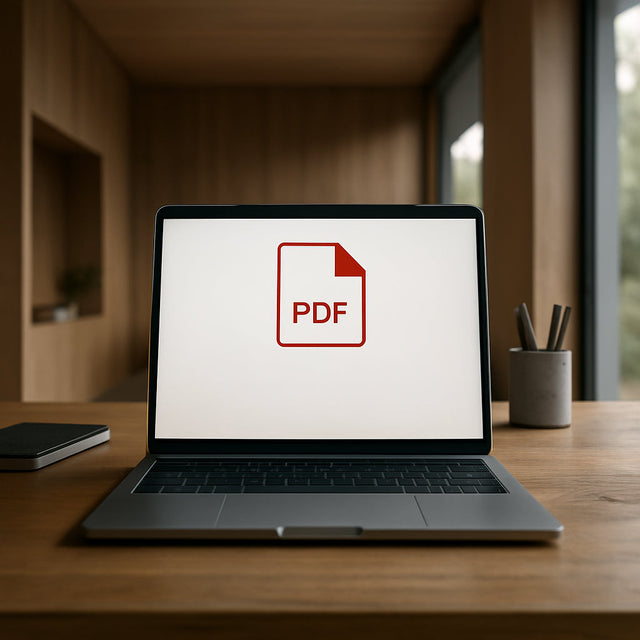How to Reduce PDF File Size?!
Best Ways to Reduce PDF File Size Without Losing Quality (For Portfolios, Submissions & Competitions)
Introduction
If you're an architect or architecture student, you've likely found yourself stuck at the last minute trying to send a portfolio or competition entry, only to be met with a dreaded error: "File too large." This guide shares proven, no-fluff strategies to reduce your PDF file size while keeping linework and images sharp — without needing extra software or plugins.
Why File Size Matters in Architecture
- Competition platforms usually limit uploads to 10–20MB
- Emails often reject files over 25MB
- Jury members and clients may open on mobile or slow connections
- Large PDFs give the impression of poor organization
A well-compressed PDF communicates clarity and professionalism — essential traits for any designer.
General Principles for Reducing File Size
- Flatten transparencies only when needed – Flatten too early, and you risk quality loss.
- Export at the correct DPI – Use 300 DPI for print, 150–200 for screens.
- Keep vector elements – Linework and text should remain vectors.
- Compress images wisely – JPEG for renderings, low-res PNGs for diagrams.
- Remove hidden layers – Clean your file before export.
- Use efficient fonts – Stick to common or web-optimized fonts.
- Compress after combining – Merge, then compress the final PDF.
Top Tools to Compress PDFs
- Smallpdf – Free, intuitive, strong compression.
- ILovePDF – Good free alternative with compression levels.
- PDFsam Basic – Free desktop tool for merging and optimizing.
- Adobe Acrobat Pro – The best for full manual optimization.
- Preview (Mac) – Export > Quartz Filter > Reduce File Size.
- Ghostscript – Open-source compression for advanced users.
Export Settings by Software
Adobe Illustrator
- Uncheck “Preserve Illustrator Editing Capabilities”
- Downsample images to 150ppi
- Use JPEG (Medium) compression
InDesign
- Choose “Smallest File Size” preset
- Manually set 150 ppi, JPEG Medium
- Uncheck tags, marks, and bleeds if unnecessary
Revit
- Use vector, not raster, export
- Keep sheet sizes in check
- Export clean views, combine later
Rhino
- Use vector PDF export
- Disable “Capture Text as Curves”
- Simplify hatches
Photoshop (for image-heavy pages)
- Flatten layers
- Use “Save for Web (Legacy)”
- Set JPEG quality to 60–75%
Bonus Habits to Keep Your Files Light
- Link images — don't embed until final export
- Use RGB color mode for screen PDFs
- Limit transparency effects like glows and shadows
- Clear unused swatches and symbols
- Compress only once at the end
- Stick to 1–2 fonts per document
- Use clear, final file names like
portfolio_final_small.pdf
Common Mistakes That Inflate File Size
- Not resizing images before placing them
- Leaving Illustrator editing capabilities turned on
- Not flattening complex transparencies
- Re-exporting compressed files multiple times
- Using high-res renders as thumbnails
Conclusion
Reducing PDF size is about being intentional with your workflow. By understanding how your tools handle images, vectors, and text — and using the right compression method at the right time — you can create lightweight PDFs that print beautifully, load instantly, and feel professional.
Whether you're applying for a job or submitting to a competition, a sharp and optimized PDF makes sure your work speaks clearly and confidently.

0 Comments
There are no comments for this article. Be the first one to leave a message!